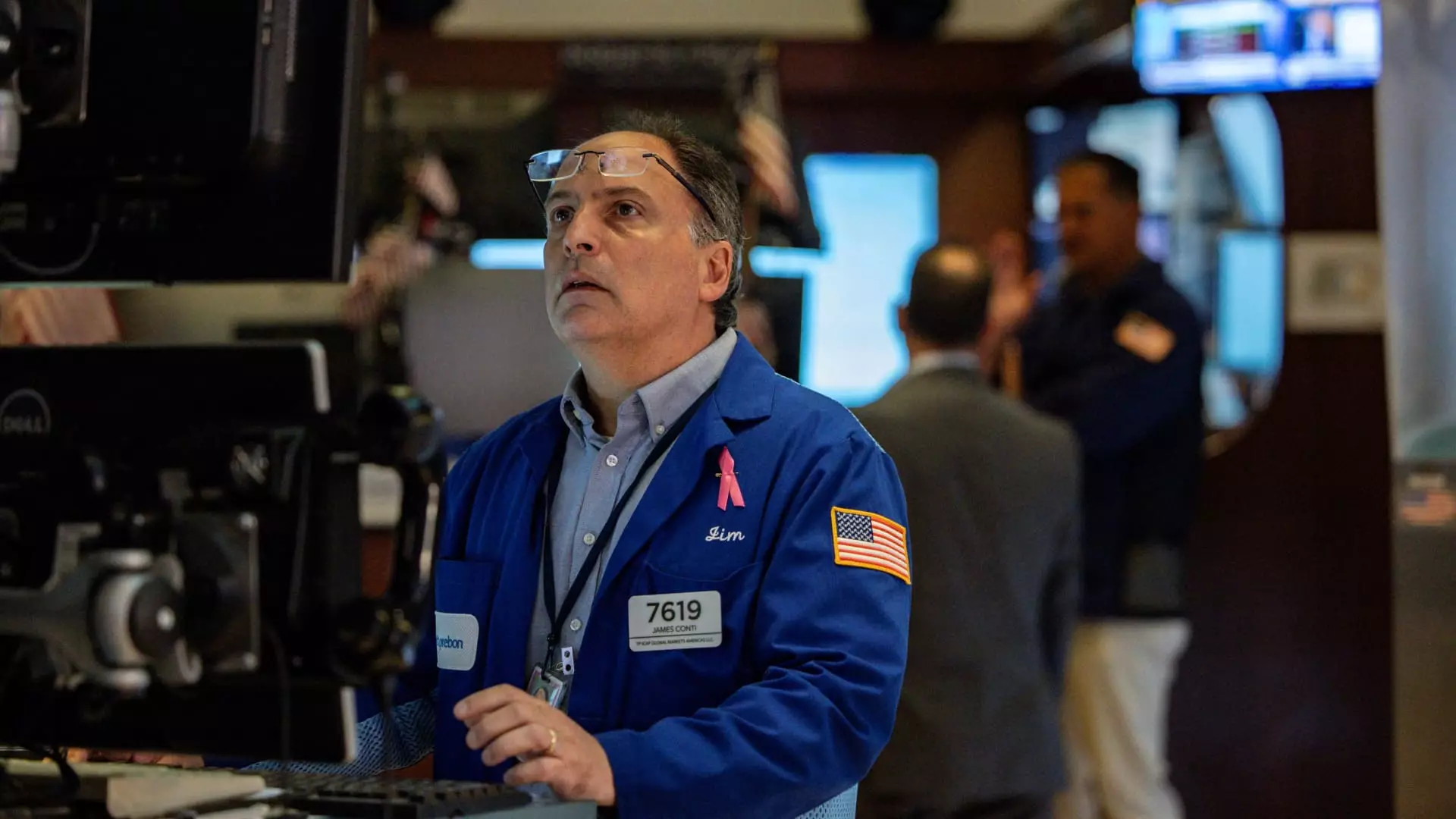In recent weeks, financial markets have exhibited a perplexing paradox: moments of apparent resilience amid the looming menace of escalating trade disputes. Last week’s market behavior underscores this disconnect. The stock indices, on paper, reached new heights or maintained a semblance of stability, only to be shattered the very next day by decisive policy shifts and aggressive rhetoric from the White House. This oscillation reveals a fragile optimism rooted more in complacency than in genuine economic strength.
It is crucial to recognize that underlying market buoyancy has been artificially sustained by short-lived relief rallying on superficial indicators, not robust fundamentals. The simultaneous rise in indices like the S&P 500 or Nasdaq during incremental trade war escalation illustrates an unsettling tendency of investors to dismiss the profound implications of trade conflicts. This form of market optimism is akin to a house built on sand—deceptively standing tall, yet vulnerable to the slightest tremor.
The Dangerous Dance of Tariffs and Market Confidence
The recent announcement of a 35% tariff on Canadian goods and plans for broader tariffs across multiple trade partners was met with mixed reactions. On the surface, President Trump’s claims that the tariffs have been “very well-received” seem reassuring. However, beneath this facade lies a growing swell of economic uncertainty. Tariffs are not mere administrative tools—they are economic weapons that distort global supply chains, inflate consumer costs, and undermine long-term growth prospects.
What’s troubling is the administration’s reckless approach—treating tariffs as a lever for political leverage, rather than as a strategic policy informed by economic realities. The escalation, particularly targeting close allies like Canada and threatening to extend to other nations, risks fomenting retaliation that could spiral into a full-blown trade war. The market’s brief rally must be viewed skeptically: optimism based on the hope of diplomatic negotiations or economic resilience belies the reality that tariffs may deplete the economic vitality that has been painstakingly cultivated over decades.
Market Resilience or Political Facade?
What should concern us most is the narrative the administration publicizes—that tariffs are a positive force, encouraging fair trade and safeguarding American interests. This narrative oversimplifies and, in doing so, dismisses the complex interdependencies that define today’s global economy. The claim that markets are thriving because of tariffs is a dangerous illusion; it ignores the fact that retaliatory measures and increased costs threaten to stifle innovation and consumer purchasing power.
Furthermore, the administration’s flirtation with blanket tariffs—proposed between 15% and 20% on remaining countries—suggests a move toward protectionism that could isolate the United States economically. Such a policy risks reversing years of globalization’s gains, fostering an environment of economic nationalism that tends to hurt the very consumers and workers it aims to protect in the long run.
It is also worth criticizing the administration’s selective transparency. While market insiders eagerly await updates on Europe or other trade talks, the lack of concrete action or clear communication fosters uncertainty. Confidence—so vital for economic growth—is being eroded by a constant stream of threats, vague promises, and unpredictable policy moves.
The Political Rhetoric vs. Economic Reality
Price tags and index figures often obscure the real story—that of anxiety and instability woven into the fabric of the economy. The government’s policy choices appear reactionary, often fueled by political posturing rather than strategic foresight. This shambolic approach risks igniting a trade conflict that could simmer into a broader economic malaise, rather than resolving underlying issues.
Markets may temporarily shrug off these threats, but the underlying instability is undeniable. The weekly decline of approximately 1% in major indices is a stark reminder that investor confidence is fragile. It is heavily influenced by Trump’s unpredictable tariff announcements and the overall atmosphere of uncertainty. Historically, aggressive protectionism and tariff hikes have rarely led to sustained economic gains; instead, they damage the delicate balance necessary for growth.
The path ahead hinges on how political leaders choose to navigate this volatile terrain. With the upcoming earnings reports and inflation data, investors and policymakers face stark realities: their short-term bravado cannot mask the deep-rooted vulnerabilities of an economy teetering on the edge of protectionist overreach. The current trajectory risks transforming a moment of political opportunism into a long-term economic disaster, unless a more measured, transparent approach is adopted.



Leave a Reply